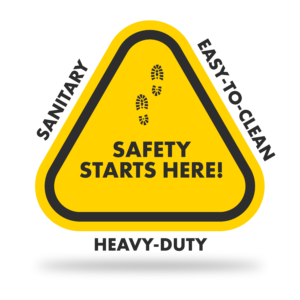RESOURCES
MAINTENANCE INSTRUCTIONS
Seamless epoxy and urethane floor systems provide a tough finish that stands up to heavy abuse. However, floors are subject to traffic that can grind surface dirt and debris into the finish. This normal abrasion can result in wear and loss of gloss.
Regular maintenance is recommended to remove surface dirt and prolong the life and appearance of the floor. The frequency of maintenance depends on the volume and type of traffic.
The following recommendations should be used as a guide in establishing a suitable maintenance program.
Smooth epoxy floors should be frequently cleaned with a commercial sweeping compound to remove abrasive dust.
As floors become soiled, they should be mopped or scrubbed with commercial detergent such as C.A. Reed’s Epoxy Floor Cleaner and warm water
- Allow cleaner to do its job (leave cleaner on floor as recommended to lift dirt prior to scrubbing)
- Scrub to further loosen dirt
- Remove soiled water and detergent
- Rinse thoroughly with clean water
- Follow detergent manufacturer’s recommendations and always test a small area when using a new product.*
Skid-resistant surfaces may be difficult to clean up with a mop. They may require scrubbing with a medium bristle brush or a bristle attachment on a power scrubber. Do not use abrasive pads or scrub dry floor. Allow new floor to cure 7 days before using mechanical scrubber.
Scratched and dulled floors may be periodically treated with a water-based, non-yellowing liquid floor finish like C.A. Reed’s Acrylic Floor Finish.
All floor surfaces eventually show wear, even with a comprehensive maintenance program. C.A. Reed Associates can reapply original finish coats at a fraction of the initial installation. Consult us for details.
These recommendations are applicable for most seamless resinous floor systems that C.A. Reed Associates installs. Consult us for specific instructions for care of your installation.
*Certain chemicals or chemical combinations may cause staining or chemical damage to some resinous systems. Many compounds with this potential are carried in water or solvent. As the chemical lies on the floor, the water or solvent may evaporate increasing the concentration and potential for staining and chemical damage. Also, as the length of exposure increases, so does the potential for staining or chemical damage. Potentially damaging chemicals should be removed from the floor system or reduced in concentration through dilution by washing with water, where appropriate, as soon as possible.
MAINTENANCE
ADDITIONAL FLOOR MAINTENANCE TIPS
C.A. Reed Acrylic Floor Finish can help restore damaged epoxy floors and other floors, but here are a few important tips to help avoid damage and wear to your floor in the first place.
Adjust forklifts so that tires won’t spin if someone slams the accelerator to the floor.
Install non-marking white tires on your forklifts and replace wooden pallets with plastic ones.
Whenever possible, replace steel wheels on carts and other material handling equipment with nylon ones. Make sure all wheels and casters roll properly and do not drag or skid across the floor.
Check that chairs have proper glides on the bottom of the legs and check other items that contact the floor for sharp edges that can cause damage.
If forklifts go to an outside parking lot, sweep the lot periodically to minimize tracking debris inside.
Most importantly, keep your floors clean. Abrasive dirt is what causes damage to floors.






